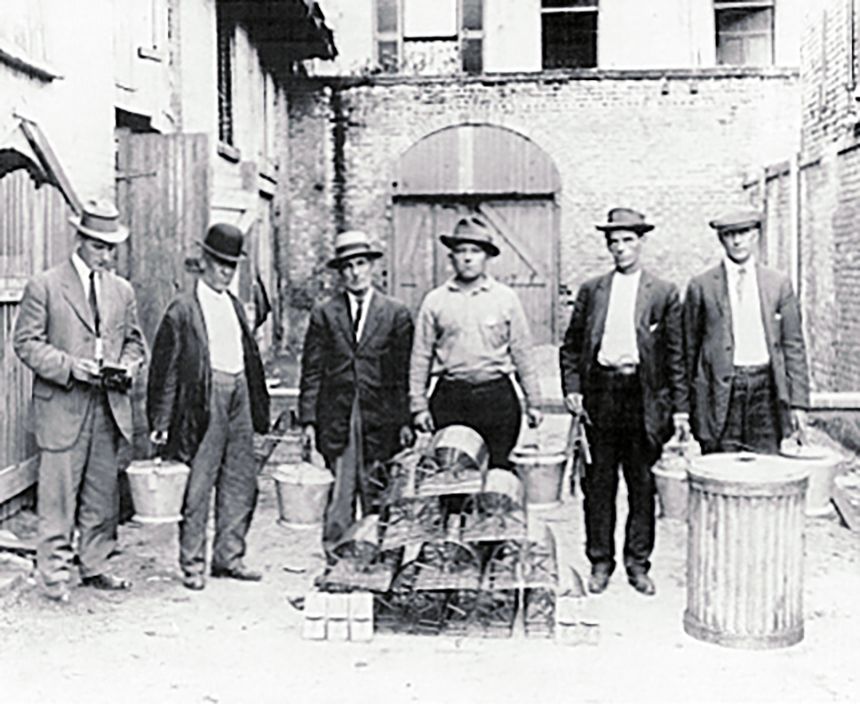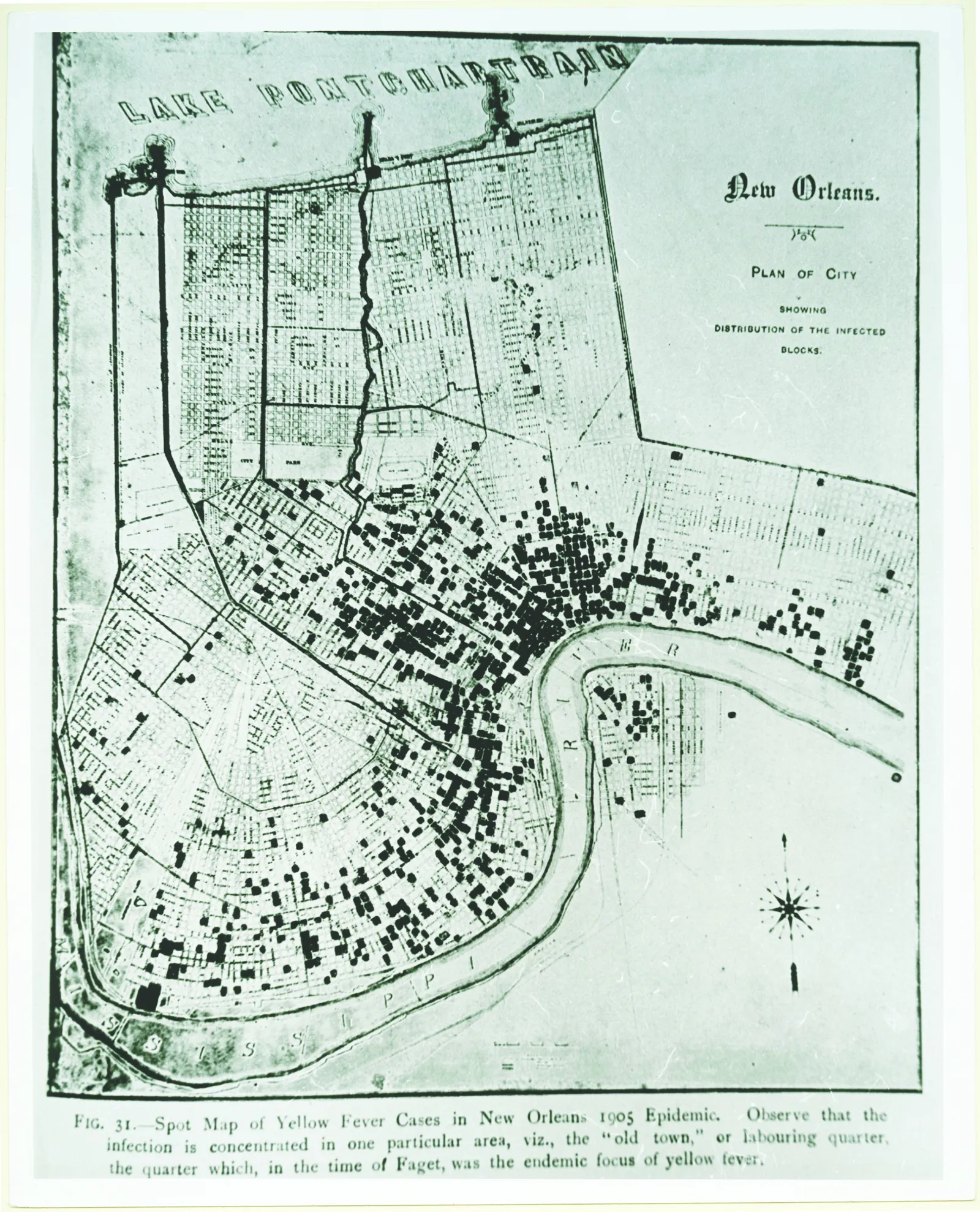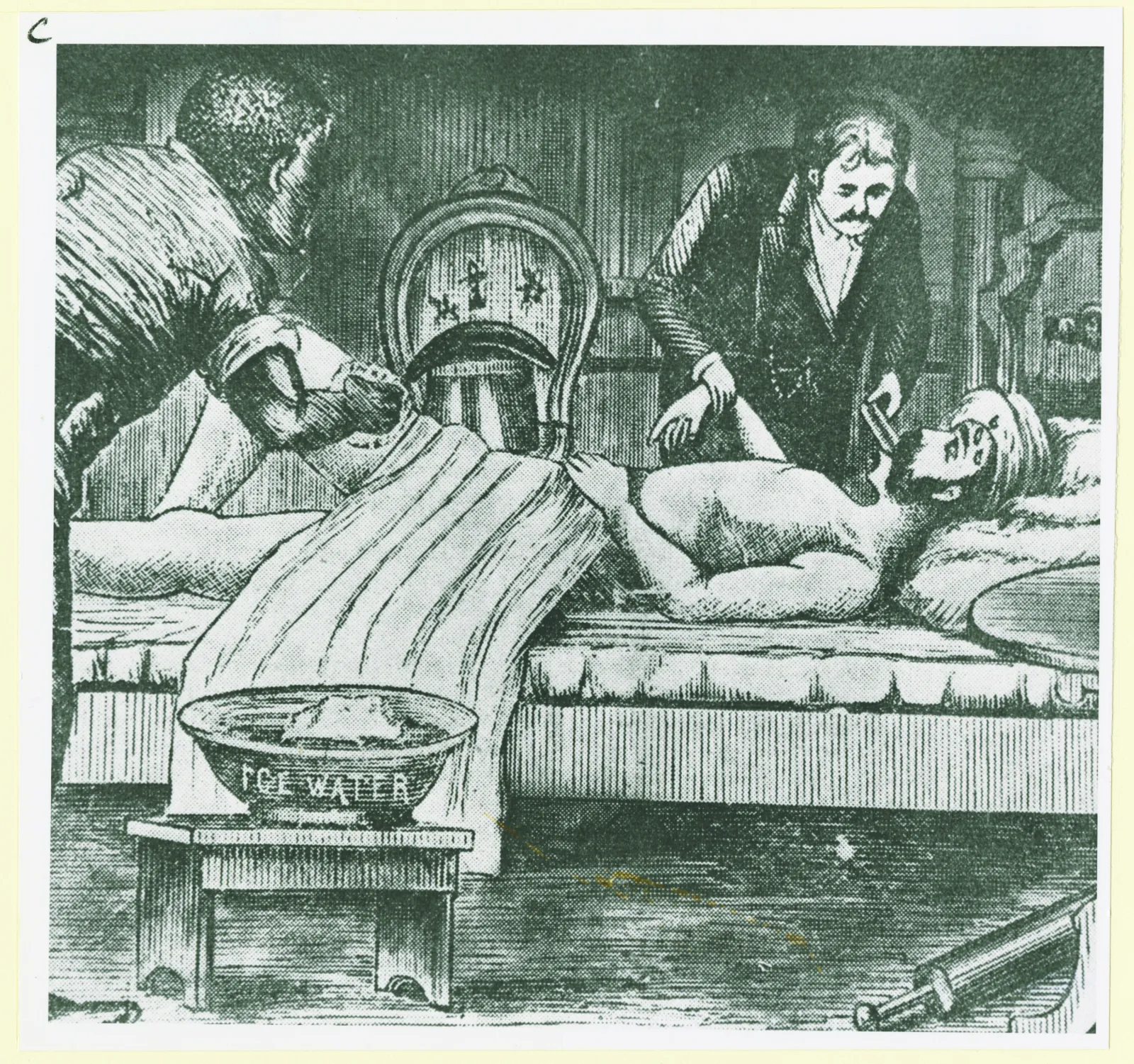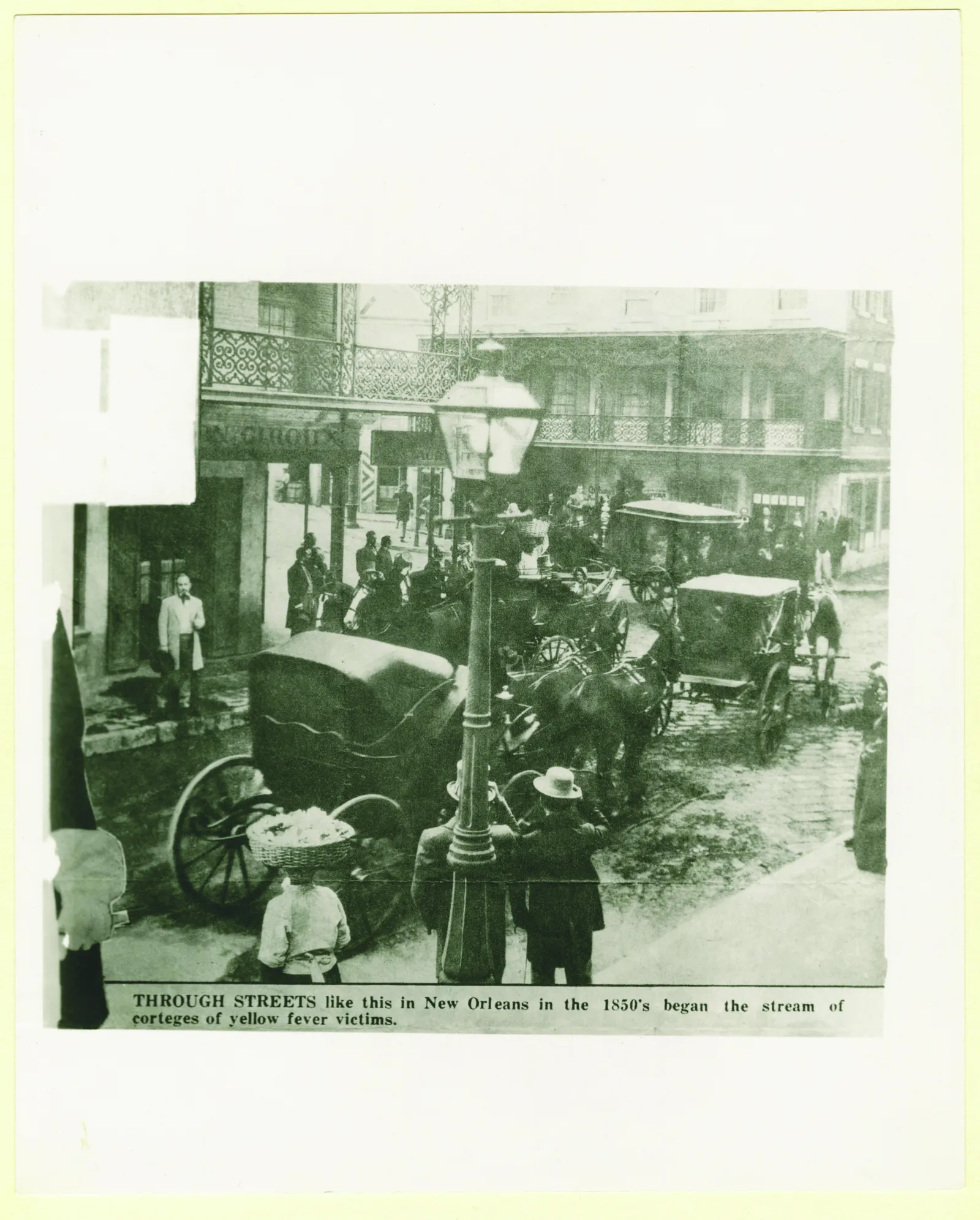The Big Easy hasn't always been easy. The city also has a darker side and a sinister past, fraught with flooding, pestilence, and death—all of which can really make us laissez les bons temps rouler just a little bit less. It's all fun and games until someone gets a highly contagious rash.

Today, New Orleans is still reeling from the effects of the COVID-19 pandemic. Nearly 18,000 people died in the state of Louisiana, and the disease forever changed the way we do business, entertain ourselves, and interact with each other. Yet this is nothing new.
Throughout its 300-plus-year history, New Orleans has been plagued by countless plagues, accounting for millions of sick and deceased. People have tried everything— from poisoning dogs to performing enemas—in hopes of warding off a range of ailments. Some even believed that wearing woolen underwear and socks, as well as how many tomatoes they ate, could influence the onset of disease.
Hoping to fight the different epidemics overtaking New Orleans, a group of physicians founded Tulane University, which began as the Medical College of Louisiana in 1834.
Here's a look at some of the many diseases that, throughout history, everyone wanted to avoid like the plague.
Smallpox
One of the worst diseases to ever contaminate New Orleans was smallpox, so-named because its characteristic pox were smaller than those brought about by syphilis—also running rampant at the time.
Smallpox was caused by the variola virus, which could live outside its human host for many years and still cause infection. The virus caused a rash, starting in the mouth and quickly morphing into open sores and pus-filled bumps, or pox, all over the body. These pox left permanent, hideous scars.
Around a third of those with smallpox didn't survive. At its worst, the disease brought a pox-covered demise to about 1 in 11 people, for a total of hundreds of millions of victims throughout its deadly history. Between 1863 and 1882, smallpox killed approximately 6,450 New Orleanians.
The first vaccine ever was against smallpox, eventually wiping out the disease entirely. The last confirmed case of smallpox was as recent as 1977.

Malaria
With all the swamps and humidity in the area, mosquitoes have become as much an unfortunate part of New Orleans culture as hurricanes and potholes. Some jokingly call them the official state insect of Louisiana (which is really the honeybee).
While the buzzing, itchy ways of mosquitoes are as annoying as many winged insects, they no longer have mass quantities of New Orleanians dropping like flies.
Malaria is caused by one of several parasites of the Plasmodium family that are carried by mosquitoes. When the female Anopheles mosquito feeds on human blood (only female mosquitoes bite, by the way), they transmit the parasite into the bloodstream, causing illness.
The disease causes flu-like symptoms, from fever to fatigue. Serious cases can lead to seizures, kidney failure, brain issues, ultimately a coma, and possibly death.
Malaria was a major problem in New Orleans back in the day because the area provided an ideal climate for mosquitoes to thrive. It killed as many as 1 in 556 people in the city during its peak.
Yellow Fever

Another mosquito-borne disease, yellow fever—aka "yellow jack" or "the saffron scourge"—is probably the most terrible, deadliest disease in New Orleans's history. It was a grisly disease marked by scenes of horror: one victim dying every five minutes; blood pouring out of people's nose, eyes, and ears and their screams before they died; bodies piled three-high in the graveyards, rotting in the sun.
Characteristic symptoms were yellowing of the skin and eyes, or jaundice, for which the ailment was named, as well as its tell-tale "black vomit," when victims would regurgitate partially clotted blood due to internal bleeding in the stomach.
Yellow fever is caused by a deadly virus carried by the female Aedes aegypti mosquito—also the vector for the Zika virus.
Between 1796 and 1905, Louisiana was repeatedly ravaged by multiple yellow fever epidemics, taking more than 100,000 lives throughout the state and 40,000 within New Orleans.
The New Orleans yellow fever epidemic of 1853 is considered the worst single disease epidemic to befall a major U.S. city. An estimated 11,000 people died that morbid summer, wiping around 10 percent of the total population of New Orleans. That year, Louisiana had the highest death toll of any state during all of the 19th century.

Cholera
Cholera is a horrible disease that causes its victims to have such bad diarrhea that they quickly die of major dehydration. The rapid loss of fluids can lead to kidney failure, shock, coma, and death in a matter of hours.
Caused by an infection of Vibrio cholerae bacteria in the small intestine, cholera is spread through contact with contaminated food or drinking water. Questionable sanitation levels of 19th-century New Orleans made it a major concern.
Several major cholera outbreaks occurred here in the 1800s, including perhaps the worst, in 1832, when 3,000 New Orleanians died in two months. Later, in 1848-1849, the unpleasant disease claimed the lives of another 739 locals in 17 days, ultimately killing thousands in approximately three weeks.
Bubonic Plague
No list of plagues would be complete without the plague itself. The gruesome bubonic plague is caused by Yersinia pestis bacteria transmitted by rat fleas. Someone bitten by an infected flea will develop painful bumps known as "buboes" (thus, bubonic), which are sometimes as large as eggs.
Often, these giant, swollen buboes broke open and oozed pus, forming characteristic boils. If accompanied by internal bleeding that coagulated under the skin, the boils were black. This is where the name "Black Death" came from, which killed at least 25 million people in 14th-century Europe.
New Orleans has always been as welcoming to rats as it has been to tourists from around the world. When rats from Europe visited on cargo ships in 1914, they brought with them plague-infested fleas.
Through mass clean-up and rat-proofing efforts, city officials were able to contain and eradicate the disease by eliminating over half a million rodents. Their efforts were not without consequences, however. They threw the rat out with the bathwater by burning people's possessions and knocking down hundreds of buildings, managing to destroy rats, fleas, bacteria, and historic architecture in one go.

